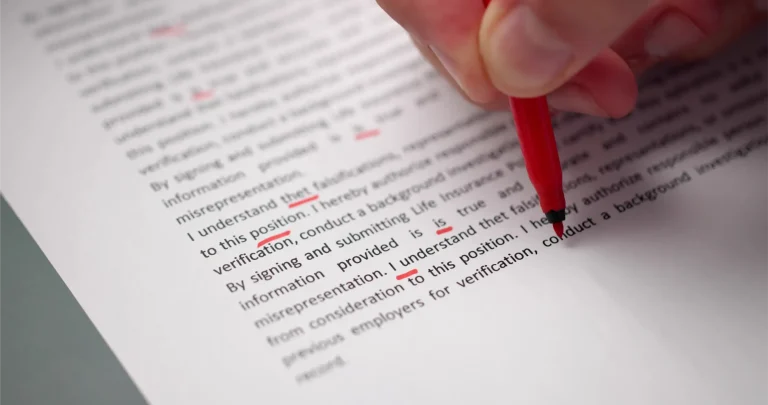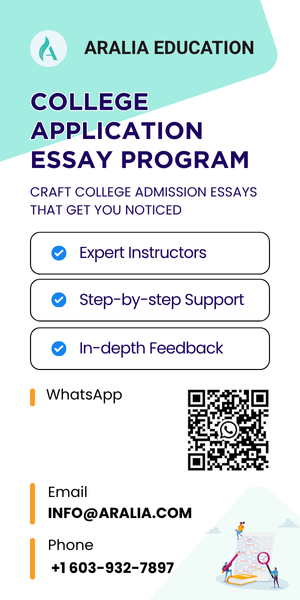If you’re interested in applying for a Creative Writing major in college, or any Writing majors, it may be beneficial for you to submit a writing portfolio for college as supplemental information. This allows college admission officers to evaluate your potential and your growth as a writer. Keep reading to understand how to make a writing portfolio for college admission in the article below
1. What is a writing portfolio?
Similar to an art portfolio, a writing portfolio for college is a collection of writing work you’ve written in the past. The portfolio can take two forms, either print or electronic, and your work samples can either be published or unpublished. An outstanding portfolio not only assesses an applicant’s writing proficiency but also demonstrates an applicant’s potential as a writer and critical thinker.
A strong portfolio is more than a showcase of your work. It is a reflection and a representation of yourself as a writer, more specifically, a poet, a scriptwriter, journalist, or a creative writer.
According to Cengage, there are two kinds of Writing portfolios:
- A growth or process portfolio, which shows the writer’s improvements and writing growth.
- Best-work or presentation portfolio, which highlights a writer’s ability and achievements.
2. What should I include in my writing portfolio?
Creating a portfolio can be time-consuming. A writing portfolio for college can be customized based on each writer’s specialty and preferences. For example, if you’re interested in scriptwriting for films or plays, you can focus on providing samples related to the field, by showing playwriting works. However, if you’re not sure the direction you’re heading towards with your writing, your portfolio can include various work types.
In Knox College’s scholarship application, it’s specified that a student’s manuscript can be submitted in one or more of the categories below, but can’t exceed 20 pages total. For Knox College, the preference is given to students who show a range of talent and potential in all represented genres:
- Poetry (5-8 pages)
- Fiction (one short story)
- Creative nonfiction (one essay on any topic)
- Journalism (2 articles of investigative reporting)
- Playwriting (one-act play)
- Critical essay (one analytical paper on literature, film, or dramatic performance)
Taking the University of the Arts, for example, this school has different requirements for students applying to the Creative Writing program or the Screenwriting program. For the creative writing program, students are required to submit a 10-15 page of a portfolio that includes at least two different pieces of writing, along with an essay answering a designated prompt.
Therefore, depending on schools, you may have a different set of requirements on what to include in a portfolio. Remember to check each school you’re applying to!
Overall, a portfolio should have a range of works: poetry, short stories, creative nonfiction, screenplays, novels, etc.
After collecting your work samples, it’s recommended that you should write a reflective statement at the beginning of your portfolio, or at the beginning of each work. A reflective statement is a personal assessment of your writing achievements over a period of time. Beyond a portfolio summary, the reflective statement shows critical thinking and the analytical ability to evaluate one’s own work.
3. How should I create my electronic portfolio?
For your electronic or online writing portfolio, there are many free and paid portfolio website. A portfolio shows your writing achievements, expresses your personal brand, and increases your online presence for freelance writing opportunities with potential clients.
An outstanding portfolio should be simple, navigable, and coherent. It means the portfolio should be simple and straight to the point and easy to navigate. It’s important to have a clear menu bar that helps the reader navigate your portfolio without trouble. Below are some portfolio websites and a few examples of writing portfolio site that stand out.
4. Where can I get help preparing my writing portfolio for college?
Great question! Depending on which stage you’re at in the writing process, you can seek professional writers or writing tutors’ help.
If you’re interested in applying for a college writing program and want to have a set of writing samples for your portfolio, consider entering different writing competitions. A writing competition is an excellent way for you to practice and test your writing ability and to receive rewards can give you a great jumpstart to your writing career.
Aralia has great writing programs tailored for your needs, from writing competition preparation, to creative writing and writing portfolio guidance. Our classes are 1:1 or small group sized (with 3-7 students per class). Aralia’s instructors will give you practice and critical feedback for your portfolio.
Second, suppose you’re preparing work for your portfolio. In that case, Aralia’s tutors are experienced writers with advanced degrees in Creative Writing and English literature. They have helped students prepare writing samples to enter different writing competitions across America. We also have two blogs where many of our students’ works are shown: People’s Republic of Creativity & Haringey Unchained.
If you’re in the process of compiling samples and designing portfolios, your writing teachers at school can be of great resource for advice and guidance. Your teachers can provide feedback about anything, from your writing style, to strong pieces to put in your portfolio. If you need additional guidance, feel free to reach out to Aralia. We are more than happy to set you up with tutoring or classes with one of our writing teachers.
Students will learn the nuances of language, including figurative language, effective structuring, and specific forms to apply to their own piece(s). Students will work directly with both literary and media texts to plan and write their piece(s). This class will also help the students write with an aim for an audience as their submission for nation-wide and international writing competitions that are timely with the course schedule.











